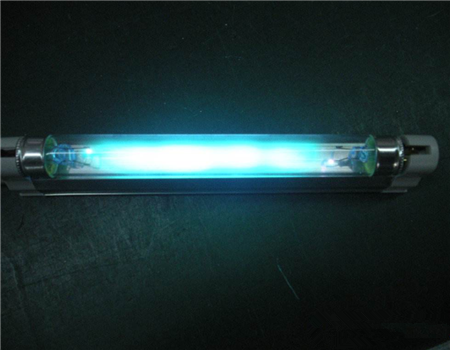In the use of ultraviolet disinfector will sometimes encounter the following similar situation, ultraviolet lamp before the use of normal, but after the use of a partial blackening. Is it because the lamp tube has a quality problem? Or an operational error? Why does ultraviolet lamp tube become black? After blackening, will sterilization efficiency be affected?

Don't worry, the main reason for the blackening of the ultraviolet lamp tube is that you have done it for you and find the root cause to solve the problem better!
1. The new lamp is black and contains sundries inside the lamp.
Ultraviolet lamp tubes commonly used in ultraviolet sterilizers are made of mercury vapor pressure and a mixture of other heterogeneous metals into a vacuum glass cavity. There is an indispensable element in the lamp: mercury, which is shaped in the form of particles before mercury evaporates completely. Other metals will be attached to the tube wall like dirt, which will be particularly clear in some transparent lamps. But don't worry, generally speaking, this is a normal phenomenon.
2. It's just beginning to use it.
The ultraviolet sterilizer is a new lamp tube or some long-time light tube, but after the lighting, there will be a ball of black gas in the filament, which is the bad rhythm?
Of course not, this group of black gas is in fact mercury vapor, the mercury gathered around the filament starts to evaporate after the heat, and is volatilized upward along the tube wall, the color is more and more light, and finally disappears.
Of course not every tube is the case, because not the mercury in each lamp tube is just concentrated around the filament, which is the normal phenomenon peculiar to the new lamp tube.
3. The lamp blackened after the lights were turned off
After the ultraviolet sterilizer lamp is out, mercury will condense because of cooling, which has the characteristic of aggregating at the coldest end of the lamp. Therefore, in the coldest part of the lamp, or near the air conditioning part, there are often mercury pollution marks left by repeated evaporation and condensation of mercury, which is a normal phenomenon.
4. Cold end black spot
UV sterilizer lamp tube in the short-term use, often will see a black spot on the edge of the filament, and will be extended with the use of time and larger. The reason is that the lamp tube is getting thinner, the power is increasing, the filament is getting longer and longer, and the filament electrode is getting closer and closer to the tube wall. If the ion bombardment is too large, it will be easy to attach to the tube wall and cause black spots. There are several reasons for this:
A. The error of power supply is too large in the process of use.
B. There are too many frequent switches.
C. The starting voltage is too high or the preheating time is not right, and the number of flashes is too much.
D.The preheating current of the ballast is too large.
E. The starting voltage is too high or the electronic ballast has insufficient warm-up time.
5. It's as dark as a ring.
after the ultraviolet sterilizer tube is used for a long time, the metal halide lamp bulb and the filament are provided with a circle of black rings around the filament, And has no relation with the service life and the light efficiency of the lamp tube.
6. Cause the tube wall to discolor
In the production process, if the process of heating and baking and exhausting vacuum and the like is not perfect, the residual hydrogen element will be left, which will also be deteriorated with the combination of mercury to pollute the fluorescent lamp powder, and if the new lamp tube is in place, it is a defective lamp tube-(yellow black). In addition, the sodium-calcium glass or the high-lead glass of the lamp tube contains a large amount of sodium elements, during the lighting process, sodium is precipitated from the glass tube and combined with the mercury, and the sodium amalgam is deposited in the fluorescent lamp powder layer to cause the fluorescent lamp to deteriorate.
To sum up, there are many reasons for the blackening of ultraviolet sterilizer lamp, but most of them will not affect the normal use of lamp.
Of course, the safest way must be to install ultraviolet intensity monitors to help us master the work of ultraviolet lamps.

